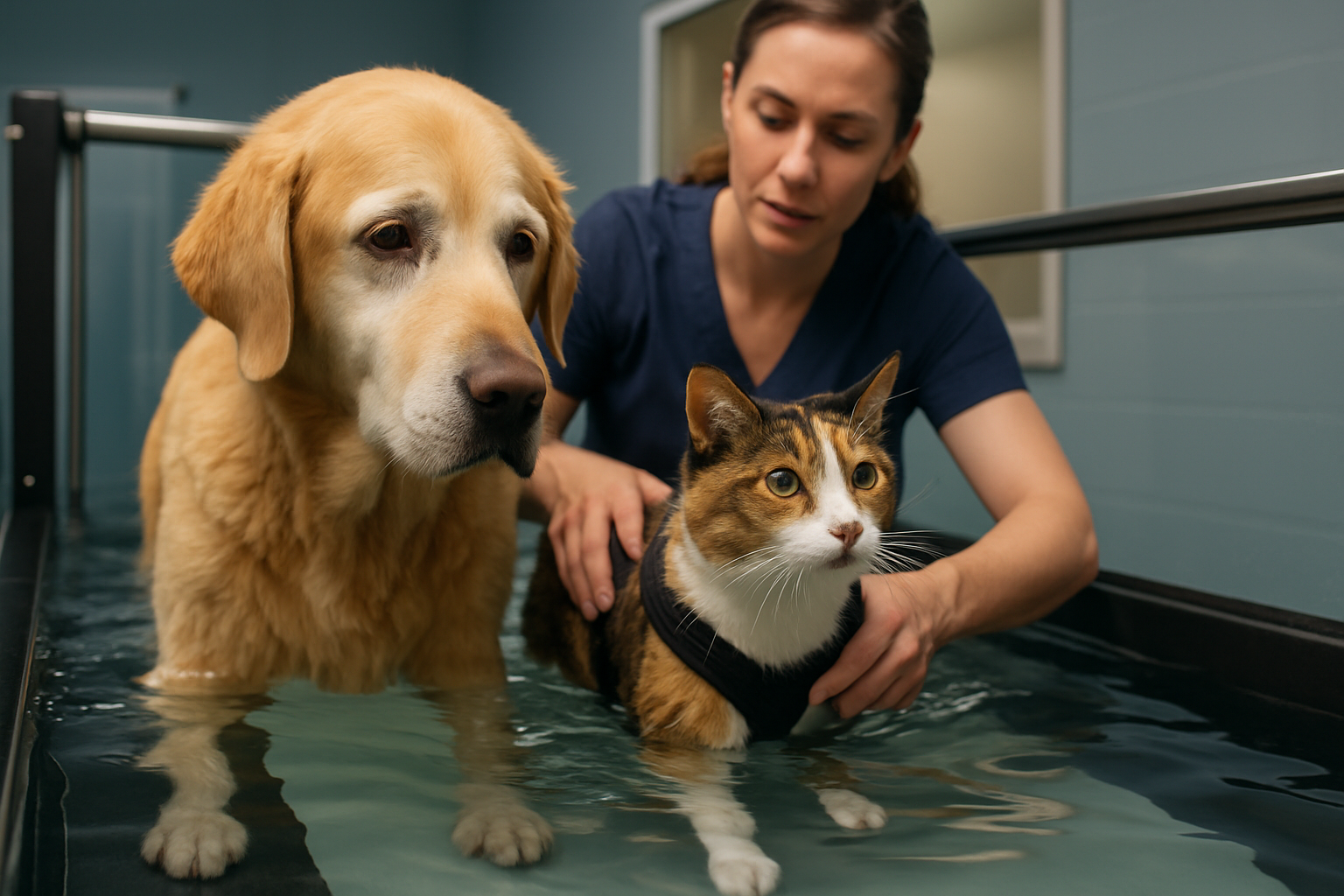Aquatic Therapy for Arthritic Pets: A New Wave in Veterinary Care
The intersection of hydrotherapy and veterinary medicine is creating ripples in the world of pet care. As our furry companions age, many face the challenges of arthritis and joint pain. Enter aquatic therapy - a revolutionary approach that's making waves in treating arthritic pets. This innovative technique harnesses the healing power of water to provide relief and improve mobility for our aging animal friends.

How Water Works Wonders
The magic of aquatic therapy lies in its ability to provide a weightless environment for pets. When submerged in water, an animal’s body weight is significantly reduced, alleviating pressure on painful joints and allowing for freer movement. This weightlessness enables pets to exercise and strengthen their muscles without the strain associated with land-based activities. Additionally, the water’s resistance offers a gentle yet effective way to build muscle strength and improve cardiovascular health.
The Aquatic Arsenal: Types of Hydrotherapy for Pets
Veterinary aquatic therapy comes in various forms, each tailored to address specific needs and conditions. Underwater treadmills have become increasingly popular, allowing pets to walk or run while partially submerged. These specialized machines can be adjusted for water depth and speed, providing a customized workout for each animal. Another common method is pool therapy, where pets swim or perform guided exercises in a controlled aquatic environment. For smaller animals or those requiring more intensive care, whirlpool baths offer targeted massage and pain relief.
Beyond Arthritis: Expanding Horizons of Aquatic Therapy
While particularly effective for managing arthritis, the benefits of aquatic therapy extend far beyond joint pain. Veterinarians are now employing this technique to aid in post-surgical recovery, manage neurological conditions, and even assist in weight loss for obese pets. The controlled aquatic environment provides a safe space for animals to regain strength and coordination after injuries or surgeries. Moreover, the psychological benefits of water therapy are becoming increasingly recognized, with many pets showing reduced stress and anxiety levels during and after sessions.
The Market Splash: Economic Impact and Accessibility
As the popularity of aquatic therapy for pets grows, so does its market presence. Specialized equipment for veterinary hydrotherapy can range from $10,000 to $50,000 for professional-grade underwater treadmills, while smaller portable pools might cost between $500 to $2,000. This burgeoning market has led to increased accessibility, with more veterinary clinics and rehabilitation centers offering aquatic therapy services. The cost for pet owners typically ranges from $40 to $100 per session, depending on the type of therapy and location.
Ripple Effects: Changing Lives One Swim at a Time
The impact of aquatic therapy on pets’ quality of life can be profound. Many pet owners report significant improvements in their animals’ mobility, pain levels, and overall happiness after undergoing hydrotherapy. Dogs that once struggled to walk now bound playfully in the water, while cats with chronic pain find relief in gentle pool exercises. This transformation extends beyond physical health, often reinvigorating the bond between pets and their owners as they witness their furry companions regain vitality and joy.
Navigating the Waters: Considerations and Precautions
While aquatic therapy offers numerous benefits, it’s not a one-size-fits-all solution. Veterinarians carefully assess each animal’s condition, age, and temperament before recommending hydrotherapy. Certain medical conditions may preclude pets from water-based treatments, and some animals may simply be averse to water. Safety is paramount, with trained professionals always present during sessions to monitor the animal’s well-being and ensure proper technique.
The Future Tide: Innovations on the Horizon
The field of veterinary aquatic therapy continues to evolve, with ongoing research and technological advancements paving the way for even more tailored and effective treatments. Innovations in water purification systems are making hydrotherapy safer and more hygienic, while advancements in underwater imaging technology allow for more precise monitoring of pets’ movements during sessions. Some facilities are even exploring the integration of virtual reality to create more engaging and stimulating environments for animals undergoing aquatic therapy.
Diving Deeper: Education and Awareness
As aquatic therapy for pets gains traction, there’s a growing need for education among pet owners and veterinary professionals alike. Many veterinary schools are now incorporating hydrotherapy into their curricula, ensuring that future generations of veterinarians are well-versed in these techniques. For pet owners, understanding the potential benefits and limitations of aquatic therapy is crucial in making informed decisions about their pets’ care. Workshops, seminars, and online resources are becoming increasingly available to bridge this knowledge gap.
In conclusion, aquatic therapy represents a promising frontier in veterinary care, offering hope and relief for countless pets suffering from arthritis and other mobility issues. As research continues and techniques refine, this innovative approach stands poised to make an even bigger splash in the world of animal health and wellness. For many pets and their owners, the healing waters of hydrotherapy are not just a treatment, but a lifeline to renewed vigor and companionship.





